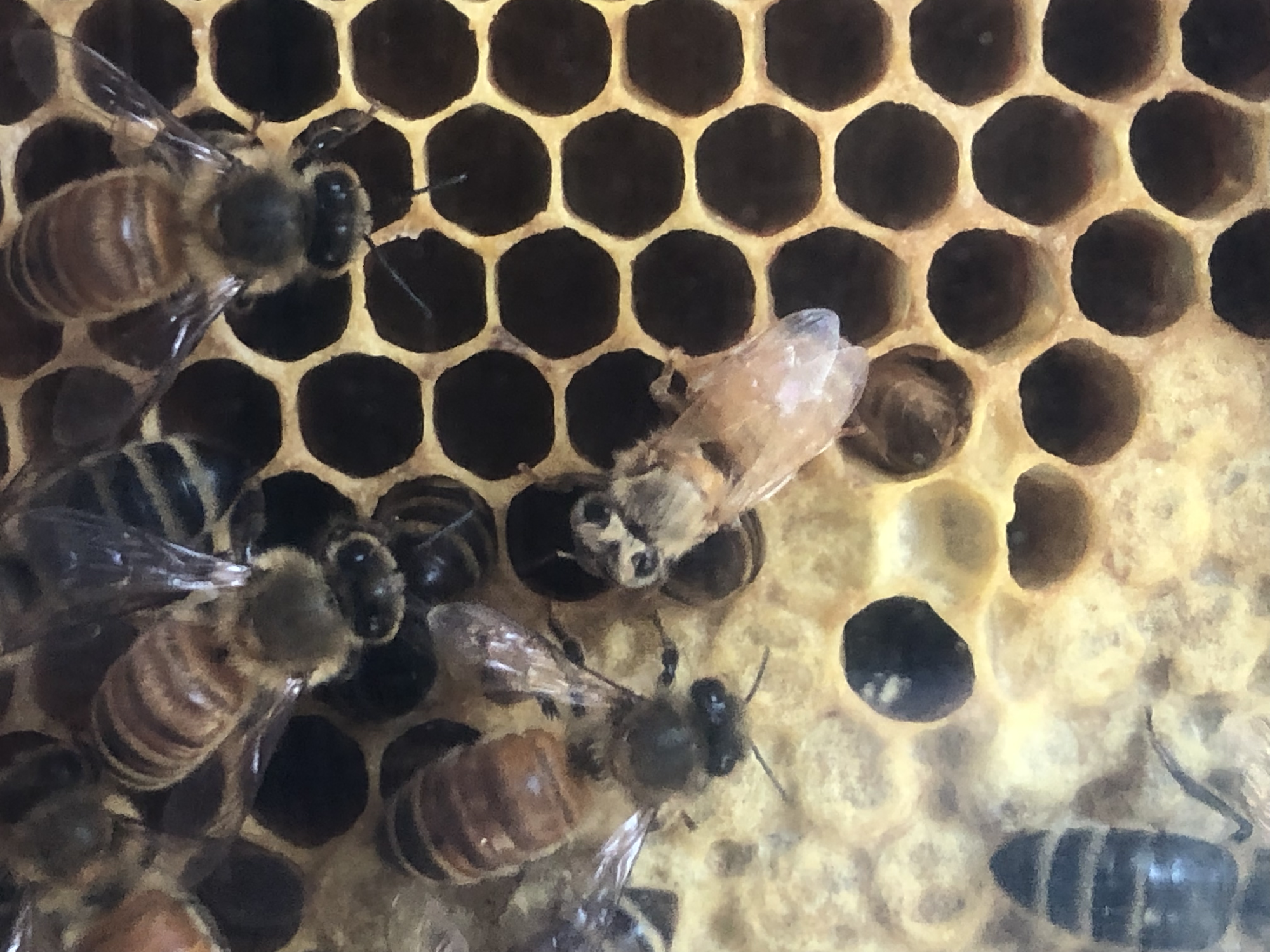
Dear Friends,
I find myself taking extra time to check on the bees these days. With summer’s sun and warmth, the hive is bustling with activity. The population has grown immensely, and there is a near-constant activity with bees leaving and arriving back with pollen and nectar. The queen is laying eggs, and we have multiple frames of capped brood, pollen, nectar, and honey.
With the bees doing so well, I’m considering the possibility that they may outgrow their home. Our single colony may split into two distinct colonies, with one flying off with the original queen to create a new hive. This natural and regular process is extraordinary and rarely seen by anyone other than beekeepers. It begins weeks in advance when the decision to leave is made. Workers will build a queen cell where the queen will lay an egg. That egg is raised to be a new queen, and during the process, scout bees will fly out to find a welcoming site for them to alight upon. When ready, the original queen will leave the hive with approximately half the bees following her to that predetermined landing site, and scout bees will again fly out to find a spot for the new hive. The bees are at their most docile at this time. They have nothing to protect other than the queen. While it may seem slightly disconcerting to see this cloud of bees, I feel it is also a joyous thing to witness—to see this colony set out to add further to our bee population and the health of our community.
Curiously, the bees are at their most vulnerable at this time. They do not have a hive full of stores to fall back on, and they move out with only the pollen and nectar they had consumed before they left. Starvation is a possibility, as is the death of the queen, or rainy and cool weather, any of which would be the end of this new hive.
We are so fortunate to have our hive and be able to view all of its seasonal activities. I urge you to come down and see how our bees are doing. Enjoy the waggle dances; watch how a bee removes the pollen from her legs and deposits it in a cell; identify the difference between capped brood cells and honey-filled cells; even watch the queen lay her eggs.
Be well,
Matthew Graff
Executive Director
Skidompha Public Library
